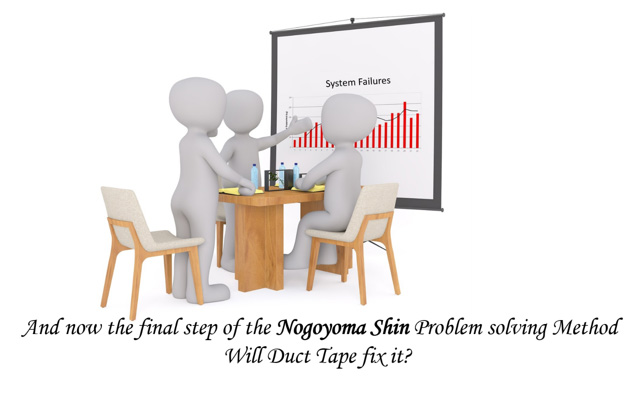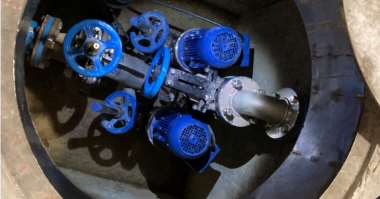Author: Henri Azibert
It is always expected that when the “on” switch is activated the equipment starts. Just as important is that it keeps running when it needs to, and that no unplanned maintenance or shut down is required. For some services, all that is required is the purchase of well specified high quality equipment. Everything works as required and as expected. However, that is not always the case: reliability can be marred with problems.
Either the service is particularly difficult, or the equipment is not properly operated, or the machinery specified is not appropriate for the application. The result is poor reliability, short life, downtime, and lost production. At that point, it is particularly important to analyze the problem(s) and implement sound solutions.
There are many publicized techniques that are used to approach problem solving. Acronyms abound: the five “Ws”, “6 Steps in Creative Problem Solving”, “The seven steps”, “The 8D”, “The Nine Strategies”, root cause analysis, Kaizen blitzes, DMAIC cycle, FMEA, and many others. With so many problem-solving methods and techniques, it is surprising that we have to deal with any problems at all. Yet, we do have to deal with problems, and on a too frequent basis. So, here are a few good practices that will help you finding meaningful solutions.
What not to do. First, a word of caution on what does not work. Do not assume that following a preferred or most popular problem solving technique will necessarily solve the problem. Without an understanding of the subject matter, meaningful solutions will be elusive, no matter how thoroughly the problem-solving method is followed.
Find the right problem to solve. How often do we hear that the reason the pump had to be taken out of service is because the seal failed? The focus is then on obtaining a better seal. Yet, most often the seal failed because the pump ran dry, or the seal was over pressurized from pressure hammer, or a sticking pressure relief valve. Or it could simply be that fasteners were not properly torqued.
Research reference published material. When a piece of equipment fails, a first step might be to get all the related documentation, and study it in details. Installation and operation manuals contain a wealth of information; they most often were set aside during installation and commissioning. If that was the case, now is the time to review them. Missed steps, ignored warnings, exceeded operational limits are often the source of the problem. Manufacturers’ Associations Web sites are a good source of technical information on the type of equipment suspected of causing the failures. Industrial Standards also contain valuable information on best practices. Checking whether they were followed, or reviewing the informative sections, can provide valuable insights. The Internet can offer answers, but only if we ask the right question, and use judgment about which web sites are credible.
Apply a theory and Rely on the scientific method. The method involves systematically collecting data to test a hypothesis. It basically consists of developing a theory and then testing its implications. A theory can help us gain understanding of what happened, why it happened, and how to change it. This can then point us in the right direction to find a solution. But always be skeptical about the results, and double check all observations. If the solution appears to be too easy, it probably is not the right or complete solution.
Use Reasoning. It can be deductive reasoning: applying a general rule in a specific instance. If the problem is cavitation that is usually caused by insufficient suction pressure, check for obstructions in the suction line. It can be inductive reasoning: drawing on specific instances to form a general rule. For example, run a process at a specific temperature then at a lower temperature, and repeat, while observing the effects. A rule on temperature effects can then be postulated.
Reason by analogy. Use what you have learned about similar problems. Often the problem-solving methods we used and the actual solutions we found effective in the past can work to solve a current problem. So, if you have solved before a problem with a similar pump or piping system, the same solution may work with the problem at hand. In fact, the same solution might be useful in another underperforming process.
Use mathematics. Identify variables, determine the relationship between them, develop a formula. You can run a whole series of cases by changing values for variables and assess the results. It then is much easier to evaluate cause and effect. Use charts and graphs; it helps evaluate the relative importance of different variables.
When everything else fails, do what you should have done in the first place, ask someone, especially an expert. You can usually find someone who knows a lot more about how to solve a particular problem than you do. The person with much experience has most likely had to deal with a similar problem in the past and knows how it was solved. The fastest way to solve the problem may be to ask that person. Watch out for on-line forums – seek only trusted experts.
Unless you can identify a specific failure cause, repairing by replacing parts will only give you the same results you had. Consider upgrading. There are many opportunities to modernize older equipment. Look at what failed and how to improve just that part. Change only one variable at a time. Changing too many things will invariably introduce new problems.
Be mindful to always question assumptions. The problem is not just the equipment, it often is the process.
The worthwhile challenge is to solve problems before they occur.





Comments